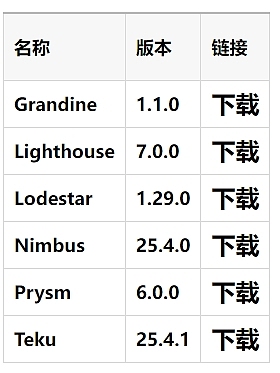Source: Denglian Community
The Pectra network upgrade is scheduled to be activated on the Ethereum mainnet on May 7, 2025, at epoch 364032 (UTC time 10:05:11)!
From EOA to Smart Accounts
EIP-7702 represents an important step towards broad account abstraction, enabling users to enhance their externally owned accounts (EOA with smart contract functionality.
This hybrid approach combines the simplicity of EOA with the programmability of contract-based accounts. In practice, it enables wallets to support:
Transaction batching , where multiple operations are performed atomically in a single transaction. No more separate transactions for "approval" and "exchange"!
Gas sponsorship , allowing others to pay for transaction fees. This is especially useful when wanting to transact from an account that does not have ETH.
Alternative Authentication, which means that many of the Hardware Security Modules (HSMs) in today’s phones can be used to authorize account actions through technologies such as passkeys.
Spending controls, which can limit the amount of tokens that can be spent by a specific application, or limit the daily outflow from a wallet, thus improving security.
Recovery mechanism, giving users different options to protect their assets without having to migrate to a new account.
To use EIP-7702, the EOA signs a delegation pointing to a specific delegation address whose code it wants to execute. Once set up, the account gains the functionality of the new code (e.g. batching, sponsorship, authentication logic, etc.). Since choosing a delegation target hands over a lot of control, EIP-7702 enforces several safety checks:
Chain-specific delegation: By default, delegation is only valid on a specific chain ID, preventing the same delegation from being used on different networks.
nonce-bound delegation: A delegation can be bound to an account’s current nonce, automatically invalidating it once the nonce is incremented.
Revocability: The owner of an EOA can always create another EIP-7702 delegation code to revoke or replace the existing delegation code, preventing permanent lock-in if something goes wrong.
Blob Scaling .oO
The last major change in Pectra is EIP-7691, which doubles Ethereum's blob throughput!
Blobs are temporary data stores introduced in the Dencun upgradethat L2 can use to submit compressed transaction data and proofs to Ethereum L1. Since going live, they have reduced L1 fees for L2 by 10-100x, significantly reducing the cost of L2 user transactions.
The Ethereum mainnet currently supports an average of 3 blobs per block, with a maximum of 6 blobs to accommodate periods of high demand. With EIP-7691, these numbers will increase to an average of 6 and a maximum of 9.
Unlike CALLDATA, which is stored indefinitely by nodes, Blobs are deleted from the network after 4096 epochs (~18 days). This limits the amount of disk space they can use. The binding constraint for blobs is bandwidth, as blobs need to gossip through Ethereum's peer-to-peer network. To offset the bandwidth increase caused by EIP-7691, Pectra also introduced EIP-7623, which limits the worst-case size of blocks.
In order to continue to scale Ethereum's data throughput without a corresponding increase in bandwidth requirements, we must move from a world where every node stores every blob to a world where nodes only store a subset and sample the network to verify the remaining blob data. The good news is: work to support this is already underway! Francesco from the Ethereum Foundation Research team outlined this scaling roadmap in his Devcon keynote.
Pectra Activation
The Pectra network upgrade will be activated on the Ethereum mainnet at the start of epoch 364032, occurring on May 7, 2025 at 10:05:11 UTC.
It has previously been activated on the Hoodi, Hoodi, Holesky and Sepolia testnets.
Consensus Layer Version
When running a validator, the consensus layer beacon node and validator client must be updated.

FAQ
As an Ethereum mainnet user or $ETH holder, do I need to do anything?
In short, no.
If you use an exchange, digital wallet, or hardware wallet, you do not need to do anything unless you are told by your exchange or wallet provider to take additional steps.
If you want to watch the upgrade go live, you can join the watch party online!
What do I need to do as a staker?
To be compatible with the upgrade, update your node’s execution and consensus layer clients to the versions listed in the table above. Make sure both your beacon node and validator clients are updated.
Why "Pectra"?
Execution layer upgrades follow Devcon city names, while consensus layer upgrades use star names. "Pectra" is a combination of Prague, where Devcon IV was held, and Electra, a blue-white giant star in the Taurus constellation.
 Catherine
Catherine
 Catherine
Catherine Hui Xin
Hui Xin Jixu
Jixu Joy
Joy Davin
Davin Jasper
Jasper Clement
Clement Catherine
Catherine Kikyo
Kikyo Jasper
Jasper